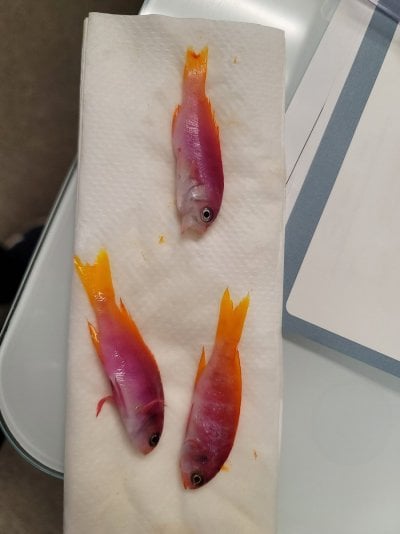Yep! Uronema is only a facultative parasite, and then, only on certain newly acquired species. I never see it show up in long term captives, nor in fish not prone to it in the first place. Uronema's "day job" is eating bacteria. For whatever reason, it becomes a systemic fish pathogen in just those few specific instances. It is a unique case where the presence of the parasite (propagule pressure) isn't the root cause of the disease, it is some other factor. It is present in almost every aquarium. I've sampled for it by hanging a whole dead smelt in the tank for 24 hours. It is clearly evident that green chromis and yellow coris pick this up as they wind their way through the supply chain. Some combination of their species susceptibility, presence of the protist and stress from transport causes Uronema to infect them. Since it presents in these fish as an inter-cellular parasite, I have to wonder if there is also some oral ingestion component to these infections?So if uronema is ubiquitous and it is impossible to remove it from a running system, wouldn’t this imply that every wholesaler and LFS holding system would contain uronema? Forever?
Since nearly every fish in home aquariums pass through wholesale/LFS systems, it must be inevitable that these systems have held a fish carrying uronema and so the LFS systems must contain uronema. Forever, until they sterilize the system. Yet it was stated that testing only found uronema in 10-25% of tanks.
It is also common practice for LFS to maintain hyposalinity, making actual visible infections in these systems even more likely. Yet my LFS does hyposalinity and claims (anecdotally) that they rarely see uronema. They even maintain a group of six green chromis in their frag system.
I need to add, because it isn't clear when I'm writing online like this, when I say "Uronema" (or when anyone says that really) we are actually saying, "cf. Uronema". The cf stands for the Latin "confrere" which means "like" or "brother". So - when you read "Uronema" understand that what is really meant is "Uronema-like". None of us (to my knowledge) are protozoan taxonomists. There may be multiple species of protist involved. I had one person contact me in a PM to say that he knew that Brooklynella and Uronema names actually need to be switched - what we are calling Uronema is actually Brooklynella and vice-versa. Since that means 100% of aquarists are wrong (except him?) there is no real reason to try to change that (grin).
Jay













